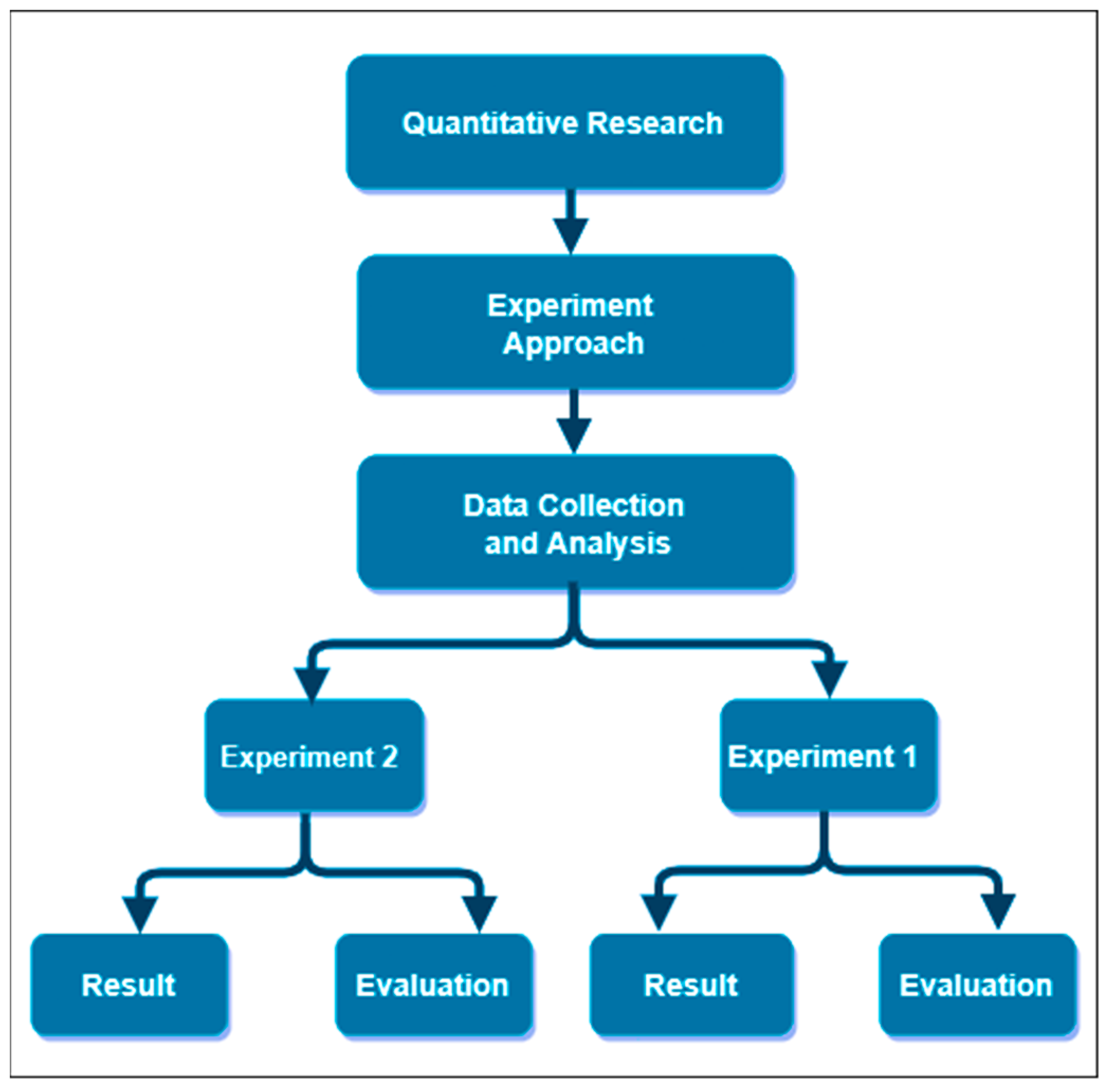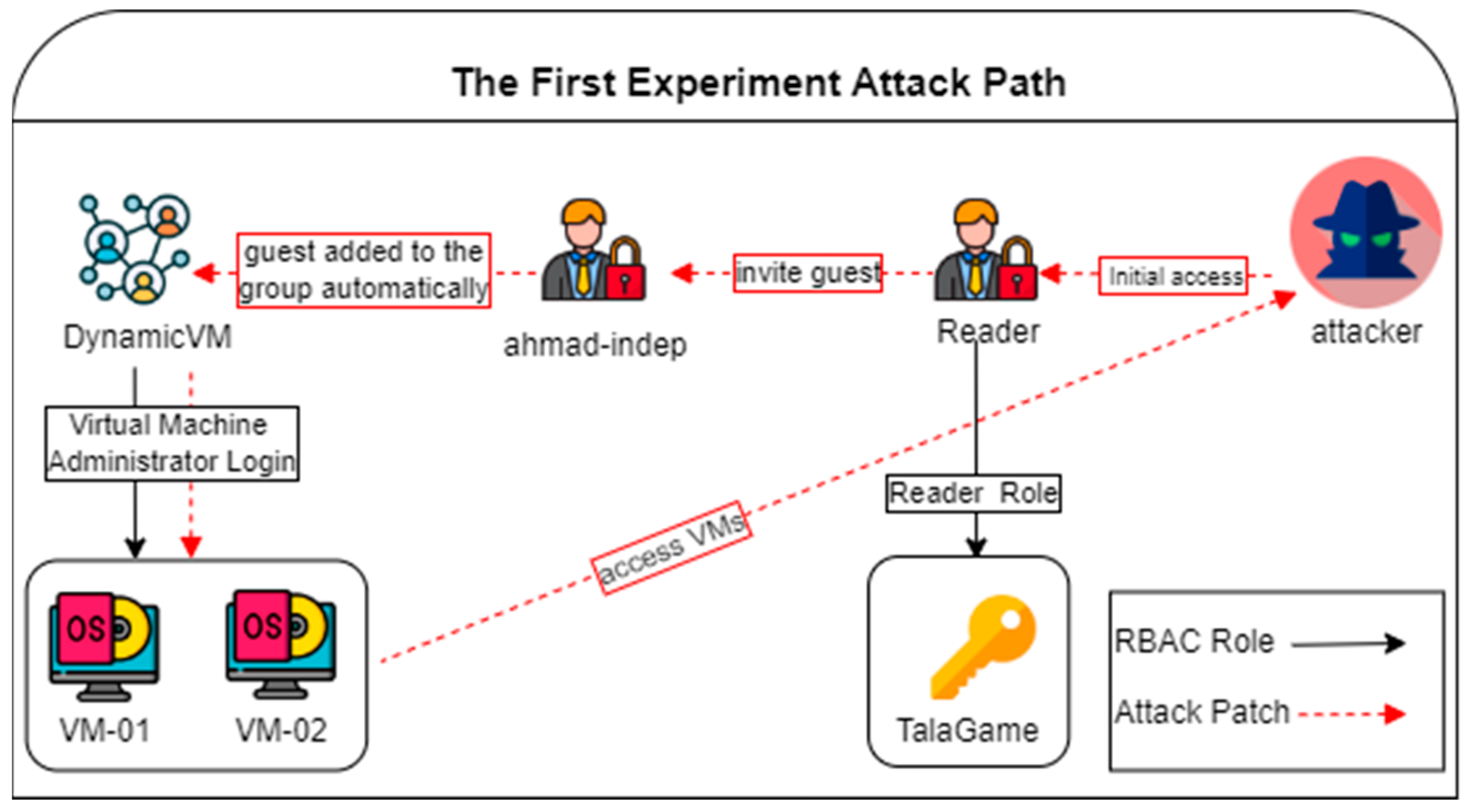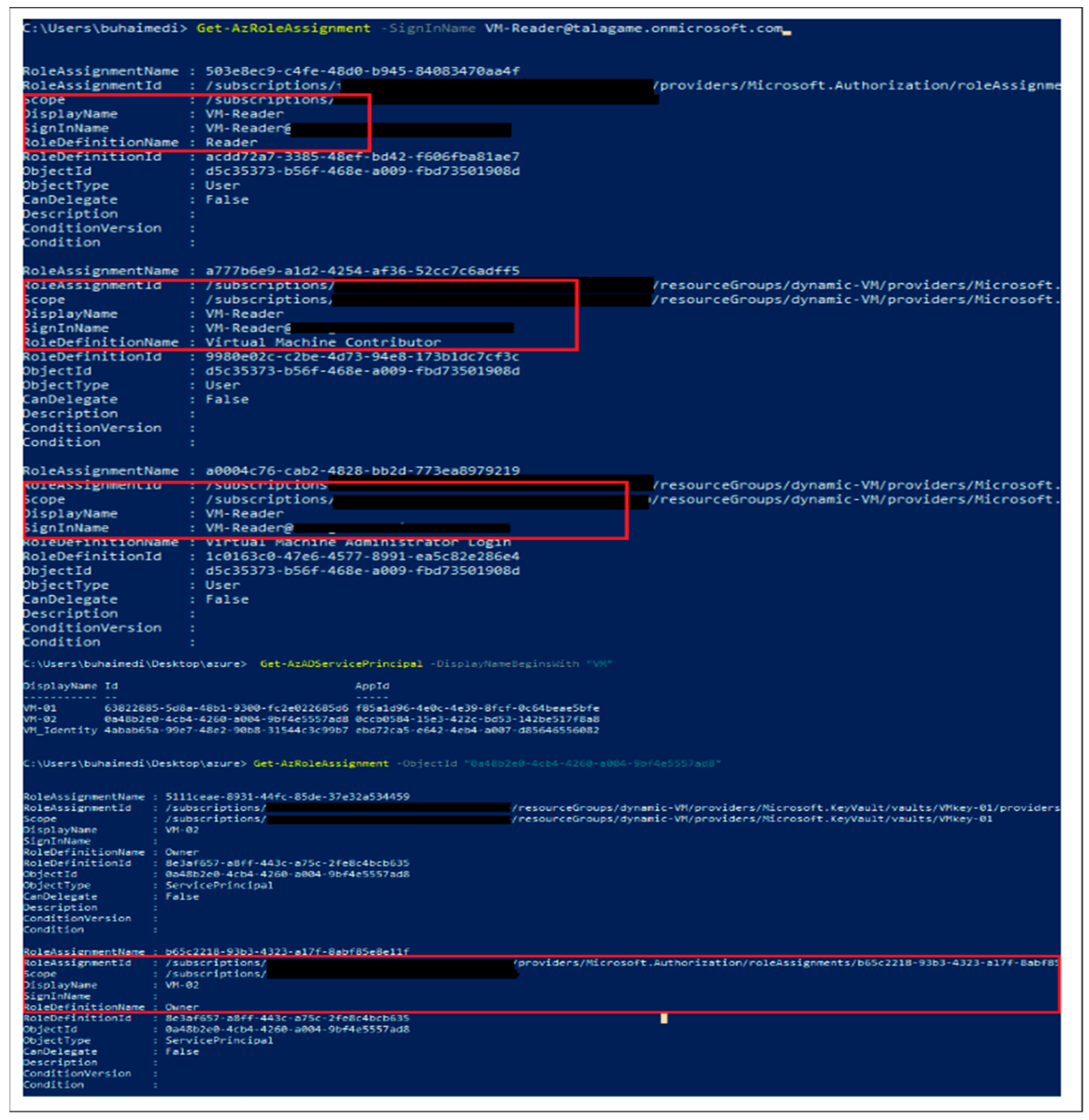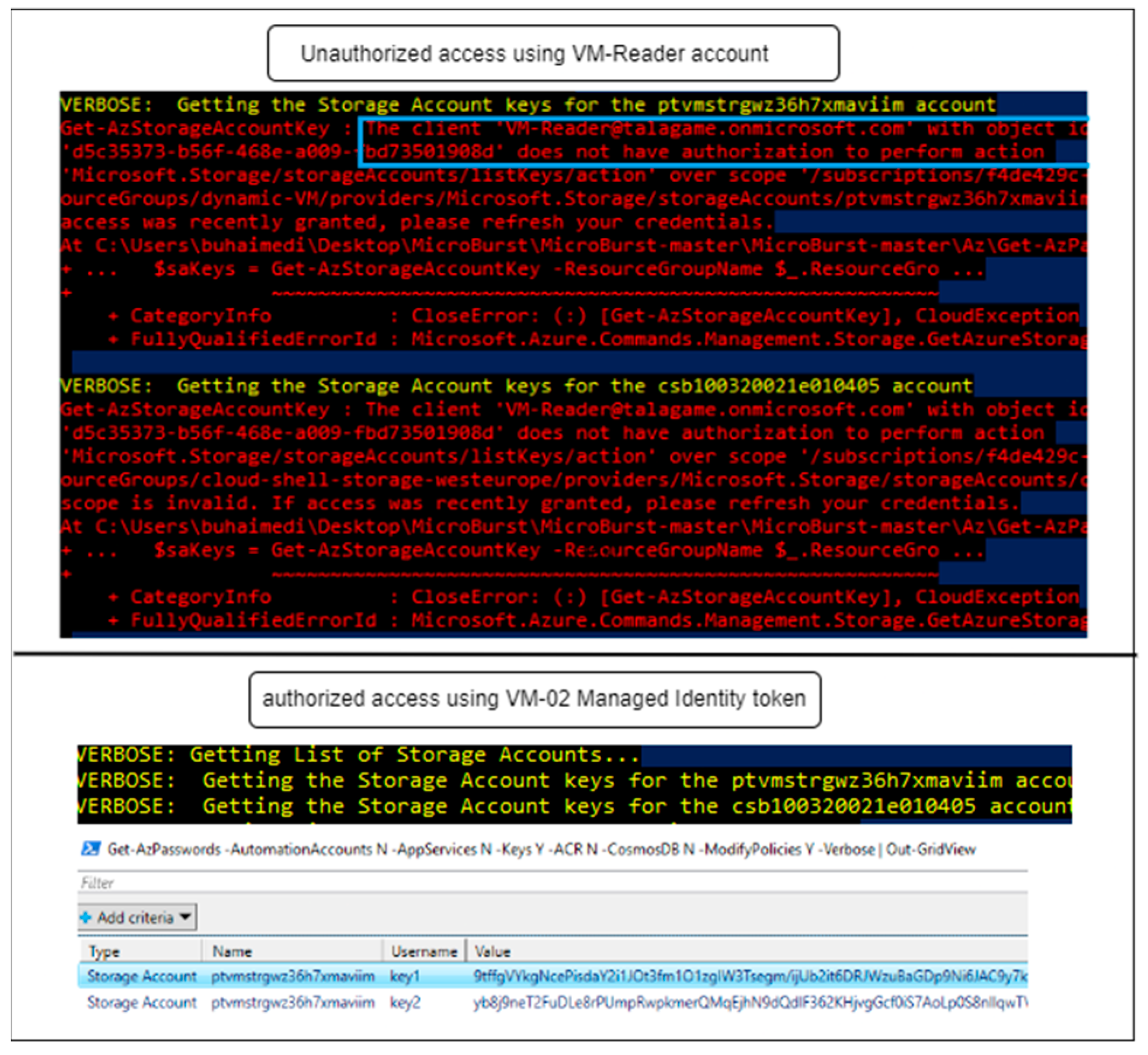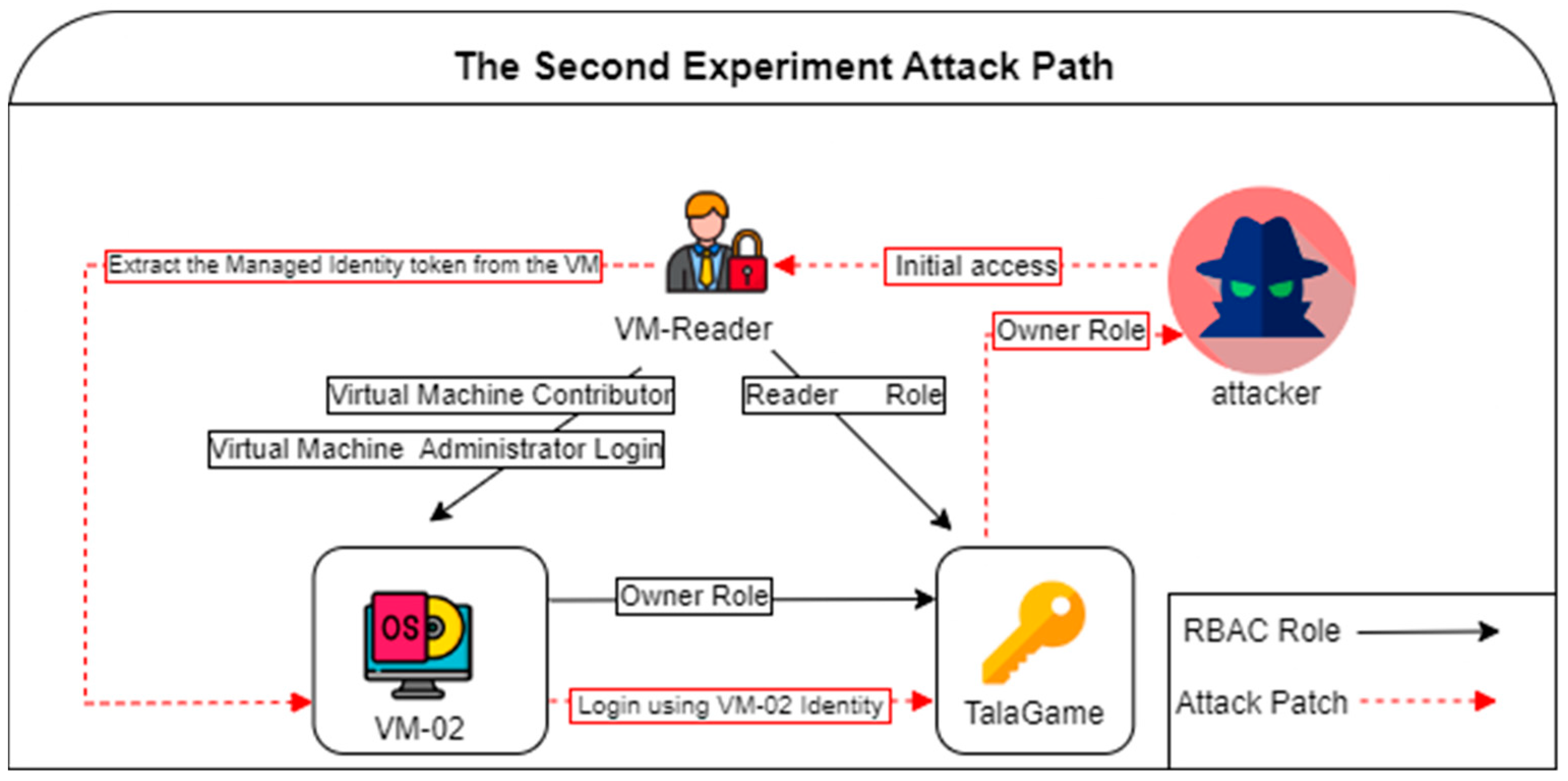1. Introduction
In the past few years, cloud computing has revolutionized the way institutions develop and provide their services. In today’s mission-critical business requirements, cloud technology plays an important role. Cloud computing provides effortless, on-demand access to a shared pool of computing resources, while requiring little management complexity [
1]. With the advent of cloud computing, it has become possible to outsource the entire IT infrastructure to a service provider. As a result, cloud solutions have become the industry standard for running IT systems in a range of organizations, from small businesses to large corporations. Consequently, several organizations find it appealing to move from on-premises computing to cloud computing, either fully or partially, which has led to increased competition between service providers [
2].
Cloud computing has emerged as a rapidly growing sector in the IT industry, offering numerous benefits such as cost efficiency, flexibility, accessibility, scalability, and increased productivity. Projections indicate that the demand for cloud computing services is expected to reach approximately
$791.48 billion by 2028 [
3]. However, alongside its potential, there are significant risks and threats associated with cloud services. The storage of confidential data in multi-cloud environments exposes organizations to a higher risk of attacks. This concern is particularly relevant for businesses that are still considering a migration to cloud computing, as it poses a potential threat to their transformation efforts.
Cloud computing enables efficient data management at a reasonable cost, with flexible pricing options tailored to customer requirements and the expertise of service providers. Price plays a crucial role in organizations providing cloud-based services, as it directly affects customer requirements and company profitability. Pricing decisions have a direct impact on the economy, shares, profits, and losses [
4]. Service vendors prioritize delivering guaranteed quality of service (QoS) to their customers, ensuring customer satisfaction and meeting service level agreements (SLAs). While pricing in the technology industry has traditionally followed a set framework, the advent of cloud computing has brought about new models of value chains, leading to the evolution of pricing models in this domain [
5]. Overall, statistical data and figures indicate a growing trend among companies in adopting Microsoft cloud services, encompassing Microsoft Office 365, SharePoint for collaborative purposes, Microsoft Office applications, and various other services [
6]. Microsoft Azure Active Directory (AAD) serves as a cloud-based identity and access management solution offered by Microsoft, delivering Identity and Access Management (IAM) services through the cloud [
7]. Moreover, AAD can be leveraged for authentication purposes across different cloud environments. AAD shares similarities with Windows Active Directory (AD), which operates as a server-based service, running on Windows Server [
6].
Despite the advantages of cloud computing, the storage of sensitive data with a third party, such as a cloud service provider, raises significant security concerns. Security is a crucial requirement for both cloud providers and their customers [
8]. Cloud systems, due to their accessibility and complexity, are associated with various risks and security issues. The National Security Agency (NSA) has identified cloud misconfigurations as a prominent cause of security breaches [
9,
10]. These misconfigurations create opportunities for malicious actors to exploit vulnerabilities or obtain user credentials through phishing campaigns or social engineering techniques, thereby enabling privilege escalation attempts [
11]. Misconfigurations can have severe consequences, including the compromise of sensitive data and privilege escalation attacks [
9].
The focus of this paper is on Microsoft Azure cloud services, specifically highlighting its security architecture. A distinctive cloud security component provided by Microsoft Azure is Active Directory (AD), a cloud-based identity and access management service [
6,
7]. Consequently, this research contributes the following:
The study identifies exploitable misconfiguration vulnerabilities in Microsoft Azure Active Directory (Azure AD), specifically focusing on privilege escalation attacks. Two scenarios are examined: misconfigurations in dynamically assigned identity groups and risks associated with managed identities on virtual machines.
Rigorous experimental evaluations are conducted to demonstrate the successful execution of privilege escalation attacks resulting from the identified misconfigurations. The evaluations utilize a common configuration scoring system to analyze and assess the outcomes, providing empirical evidence of the risks and consequences associated with these vulnerabilities.
The research provides detailed insights into the identified misconfiguration vulnerabilities, highlighting their potential impact on the security of cloud-based systems. These insights contribute to a better understanding of the risks involved and provide a foundation for enhancing the security measures in Azure AD and similar cloud platforms.
The rest of the paper is organized as follows:
Section 2 covers the related works of cloud computing, security concepts and Microsoft Azure.
Section 3 describes the research methodology.
Section 4 describes the design and configuration of the cloud environment used in the study. The detailed results are presented in
Section 5. Discussion and conclusion are presented in
Section 6 and
Section 7, respectively.
5. Experiment and Results
This section presents the experimental methodology developed to address the research objectives. The purpose of the experiment is explained, including the research questions it aims to answer and the criteria used to assess its success. Furthermore, this section outlines the exploitation of incorrect settings in each scenario, detailing the tools employed, the resulting outcomes, and potential solutions. The focus of the experiment is on the fourth step of the MITRE ATT&CK Framework, which involves privilege escalation. The aim is to simulate the attacker’s mindset and replicate real-world scenarios. It is assumed that the initial three steps of the framework, involving gaining initial access, executing the attack, and establishing persistence, have already been accomplished successfully by the attacker.
5.1. Assumption
In this experiment, we made a few assumptions. Firstly, it was assumed that the system was built using Microsoft products available on Azure to simulate the infrastructure of a small or medium-sized organization. Additionally, it was assumed that the attacker was able to implement the initial access tactic from the MITRE ATT&CK Framework. It is worth noting that, prior to selecting the most effective attack method, actual attackers conduct a substantial amount of reconnaissance within the system.
5.2. The First Experiment: Exploit the Dynamic Groups Settings to Escalate Privileges
5.2.1. Explanation
In this scenario, the administrator wishes to automate the process of managing the accounts of independent game developers. For this reason, several steps have been taken by the system administrator. As a first step, the system administrator creates a dynamic group and adds a condition that automatically adds users whose accounts contain the word “indep”. In the second step, he gave this group a role that allows all the users in the group to log on to the virtual machines, which is “Virtual Machine Administrator login”. As a final step, the system administrator has configured virtual machines for users.
A dynamic group configuration fault will be exploited in this experiment to simulate the horizontal privilege escalation attack. The following is the path of attack: First, assume the hacker was able to obtain a minimally privileged user (reader) role. As a second step, the hacker will attempt to gather as much information as possible about the organization, such as a list of users and groups, along with their roles. Through the analysis of the collected information, the hacker will be able to discover the misconfiguration, which will enable him to add an external user to the dynamic group and take advantage of the privileges assigned to that group. Due to the successful elevation of privilege attack, the hacker will have gained access to the virtual machines.
5.2.2. Aim of the Experiment
This experiment aims to demonstrate the dangers associated with the misconfiguration of automation tasks in general, especially in cases where users can directly or indirectly input values into the system. There are two conditions that must be met to consider this experiment successful. The first aspect is the successful escalation of power, either vertically or horizontally. Second, the focus should be on the flaws caused by the incorrect settings, and not on any software vulnerabilities.
5.2.3. Exploit the Dynamic Groups
The purpose of this section is to describe the steps necessary to exploit the dynamic group setup error to perform a privilege escalation attack. The process begins by exploring the system with the PowerShell Azure AD Module, using the reader account. The “Connect-AzureAD” command is used for authentication. After that, the following command will provide a list of all dynamic groups. As shown in
Figure 3, the display names of all dynamic groups are retrieved.
The next step is to determine the permissions granted to this group. By using Az PowerShell, it is possible to determine this information using the following command:
Figure 4 illustrates that the group has the role
“Virtual Machine Administrator Login” at the subscriber level. As a result of this role, all users in this group can log on to virtual machines with local administrative privileges.
The attacker can assume or predict the functionality of the group based on the name and description, but the conditions that must be met to join this group are unknown. One of the methods used to discover the conditions is to analyze the users in the group and try to find out what they all have in common. This command in AzureAD displays all users in a specified group:
where the ID is replaced by the group number that was extracted using the previous command. As shown in
Figure 5, the previous command’s output provides critical information. The first information is that all users share an “indep” word in their e-mail. The second is that there is a guest user, which means that an external user can be invited to the system.
After analyzing the previous information, the hacker will most likely attempt to add a user via the invite feature. Any e-mail from any service provider can be used, but the username must contain an “indep” word; the following e-mail will be used in the next step: “
ahmad-indep@hotmail.com”. It is possible to send invitations through Azure Portal or Azure AD Module by using the following command:
Upon successful completion of the process, an e-mail will be sent, containing an account activation link, which will be used to prepare the account and password. From the outputs of the following command, the user “
ahmad-indep@hotmail.com” has been added to “DynamicVM”, indicating that the escalation process was successful. The outputs of the command are shown in
Figure 6.
The final step is to demonstrate Ahmad’s ability to execute commands on virtual systems. It is possible to execute commands remotely on one of the virtual systems using the PowerZure framework. First, log in with the “
ahmad-indep@hotmail.com” account, and then execute a command to list all existing virtual machines. Finally, execute commands on one of the VMs. This process is done using the following commands. The outputs of the previous steps are shown in
Figure 7.
5.2.4. Results
Before successfully executing the attack, the hacker took several steps. Initially, the hacker gained access to the user “Reader” with a reader role. A dynamic group called “DynamicVM” was discovered by the hacker, which has access to virtual machines. Due to the fact that dynamic groups are used to add users automatically according to predefined conditions, the hacker was able to discover the condition by analyzing the information of the members of this group. Using the “invite guest” feature, the hacker exploited the dynamic group settings through the Internet, without the need to access the internal network to carry out the attack. This makes this attack average in complexity. Moreover, all users have the guest invite feature enabled by default; it can be disabled, so this attack requires access to a user who has this feature enabled. The hacker created an email with the word “indep” in the address. Consequently, this address was added to the dynamic group as soon as it was invited as a guest. Due to this, the hacker could access all virtual machines using the guest account. By reading, writing, and modifying files and information on these devices, the hacker is partially violating the confidentiality and integrity of information in the organization. Considering that the hacker did not obtain the owner role in the system, this attack can be classified as a horizontal privilege escalation. As this attack relies on user attributes that can be controlled by users, and because the user invitation feature is enabled by default, it may be reproducible. The steps taken during this attack are summarized in
Figure 8.
5.2.5. Recommendation
Several suggestions can be made to prevent this type of attack. As a first step, avoid relying on users’ controllable attributes in dynamic group conditions. Second step: prevent users from inviting external guests. If this feature is required, specific users are given this option, and only users from specific domains are allowed to be invited. In addition, all external users must be closely monitored.
5.3. The Second Experiment: Exploit Managed Identity Settings to Escalate Privileges
5.3.1. Explanation
In this scenario, “VM-reader” requested activation of the Managed Identity feature for his virtual machine so that he could accomplish his daily tasks. This feature allows the virtual machine to authenticate to cloud services without providing credentials. The following is an explanation of how the system administrator enabled the managed identity and configured the permissions needed to achieve the user’s desire. First, managed identity has been enabled on the VM-02 machine. Secondly, the VM-02 device has been given the validity of “Owner” at the level of subscriptions to ensure that it is able to connect to the cloud services as it should. Finally, the system administrator assigned the roles “Virtual Machine Contributor” and “Virtual Machine Administrator Login” to “VM-reader” and set the scope for VM-02 VM only, to prevent other virtual machines from being accessed using these permissions. Additionally, the account has a reader role at the level of subscriptions.
This experiment will simulate a vertical privilege escalation attack by exploiting a managed identity misconfiguration, based on the assumption that the attacker has access to the “VM-Reader” account. In the same way as in the previous scenario, the hacker collected and analyzed the infrastructure data of the organization. Using this information, he was able to determine that the “VM-reader” account had access to the “VM-02” machine, which, in turn, had owner access at the subscription level. As a next step, the hacker attempted to log in or execute a command on the virtual machine to obtain the token that would make it possible for him to log in using the virtual machine’s identity. Finally, the attacker will attempt to log in with the “VM-02” identity to escalate its permissions to “owner” and access sensitive information, such as storage keys.
5.3.2. Aim of the Experiment
Managed identities present some of the risks that this experiment seeks to clarify. Furthermore, if the managed identity that a user can access is not adequately evaluated, it may be exploitable. Two conditions must be met for this experiment to be considered successful. The first aspect is the successful vertical or horizontal escalation of power. Second, rather than focusing on software vulnerabilities, the emphasis should be on flaws caused by incorrect settings.
5.3.3. Exploits
A PowerShell Azure AD Module is used to explore the system, with the reader account as a starting point. Connect to the Azure using the “Connect-AzureAD” command, then use the command below to list all the user roles:
The output shows that the user “VM-Reader” had a “Reader” role in the subscription, and “Virtual Machine Administrator Login” and “Virtual Machine Contributor” roles on the VM-02 Virtual Machine. Utilizing the command below, list all virtual machines on the network:
Two commands must be executed to identify the roles assigned to virtual machines. The first of these commands extract the virtual machine “Id” for use in the second command:
It is evident, from the outputs of the commands, that the “VM-02” has a “system managed identity”, and that the assignment role is “Owner” on the subscription.
Figure 9 displays the output of all previous commands for further clarification. To exploit the VM’s permissions, the hacker must obtain a token. To obtain the token through IMDS, it is necessary to execute the following command on the VM. Using the Azure portal is the simplest method of executing the command locally if the remote desktop service is not available, for example, due to firewall configurations. Log in to the Azure portal website using the VM-Reader account and select “VM-02” under “Virtual Machines”. Choose “Run command” from the list of options, followed by “RunPowerShellScript”, as shown in
Figure 10. Use the following command to extract the token to be used in logging in with the privileges of the VM-02:
These commands extract the virtual machine’s “Principal Id”:
Logging in using the token can be done in several ways. PowerShell Module will be used in this attack simulation to log in with the following command:
The first command stores the token in the variable “
$MIToken”, the second command stores it in the variable “
$MIID”, and the third command is the login command, which passes both variables. Following the successful completion of the process, the hacker will have acquired the “Owner” permissions on the entire subscription level. As a result, the attacker permissions were escalated from the “Reader” to the “Owner”, due to a misconfiguration of the “Managed Identity”. As shown in
Figure 11, the attacker successfully logged in as the virtual machine VM-02.
As a result of these privileges, the hacker has access to data that the “VM-Reader” account cannot access; for example, he can view the storage keys. The following commands are executed using the MicroBurst Module. The first three commands are used for logging in, while the fourth command is used to extract sensitive information from the storage. An illustration of the difference between using VM-reader and VM-02 tokens to extract sensitive information can be found in
Figure 12.
5.3.4. Results
The hacker had to take several steps before he could successfully execute the attack. Firstly, the hacker obtained access to the user account “VM-Reader” with the “reader” role assigned at the subscription level. Additionally, this user possessed the roles of “Virtual Machine Contributor” and “Virtual Machine Administrator Login” on the virtual machine “VM-02”. The Identity Management feature was observed to be activated in the virtual machine, granting owner-level rights at the subscriber level. Exploiting this misconfiguration, the hacker managed to steal the virtual machine’s identity, thereby gaining unauthorized access to sensitive information.
To carry out this type of attack, the attacker must initially acquire local access to the targeted virtual machine. Subsequently, the attacker needs to grant administrative privileges to the virtual machine. If these two conditions are met, the attack can be replicated on a virtual machine with managed identity enabled. By executing this attack, the hacker gains access to the identity of the virtual machine possessing the owner role. With this elevated level of permission, the hacker can completely compromise the confidentiality and integrity of subscribers’ data. This experience resulted in the successful execution of the vertical privilege escalation attack. The stages involved in carrying out the attack are summarized in
Figure 13.
5.3.5. Remediation
To enhance the security of identity management in Azure AD, the following remediations are proposed: conducting a necessity evaluation to determine when identity management is essential, implementing strict controls and monitoring mechanisms for access privileges, adopting a scope-based permission model, limiting local admin privileges on virtual machines, and establishing ongoing monitoring and compliance practices. Implementing these recommendations will mitigate misconfiguration risks and unauthorized access, strengthening the overall security of identity management in Azure AD.
6. Evaluation and Discussion
In this section, CCSS will be used to evaluate the study and determine the severity of each misconfiguration vulnerability. Further, the reasons for determining the values for each factor will be explained. These steps will be based on what was discussed in
Section 3. The factor is also the result of what was extracted from each experiment in the Results section.
6.1. Evaluation of the First Experiment
Initial results of abuse in the dynamic groups experiment will be presented regarding configuration vulnerabilities as assessed using the CCSS framework.
Table 2 contains all the factors and an explanation of why each value was chosen. Additionally, the results of the calculation of Exploitability, Impact, and Base are shown.
In the first experiment, the exploitability factor was assessed at 6.9 points, indicating that exploiting this vulnerability is not difficult. This initial impression raises concerns about its potential danger. Although the impact factor was evaluated at 4.9, it is important to note that the actual impact may vary depending on the privileges assigned to dynamic groups. If higher privileges are granted, or if the scope of user access is narrower, the impact could be more significant. Conversely, lower privileges, or a more restricted user scope, could result in a lesser impact. It is crucial to recognize that the impact is directly correlated with the confidentiality, integrity, and availability of information and services. Taking all factors into account, the vulnerability was assessed with a Base Factor of 4.9 out of 10, placing it in the category of medium-risk vulnerabilities.
6.2. Evaluation of the Second Experiment
Using the CCSS framework, initial results will be presented regarding configuration vulnerabilities.
Table 3 contains all the factors and an explanation of why each value was chosen. Additionally, the results of the calculation of Exploitability, Impact, and Base are shown.
Based on our experiment’s results, the exploitability factor was rated at 2.9 points, suggesting that exploiting this vulnerability would be challenging, due to the requirement for specialized privileges and local execution of the exploit on the target device. In contrast, the impact factor scored 9.2 out of 10 points, indicating a critical level of impact. This high rating can be primarily attributed to the compromised integrity and confidentiality factors, as the attacker gained control over a wide range of subscribers, thereby accessing a significant amount of files and information. If the obtained virtual machine privileges are reduced or a specific scope is selected, the value may decrease to 2.7 out of 10. Finally, the base factor received a rating of 4.9 out of 10. The higher rating is primarily influenced by the elevated impact value compared to previous experiences. Therefore, it is highly recommended to consider all relevant factors, rather than solely focusing on the final value, when assessing vulnerabilities that arise from configuration errors. This holistic approach is crucial in obtaining a comprehensive understanding of the potential risks involved.
6.3. Discussion
This paper investigates the causes and risks associated with privilege escalation attacks on Microsoft Azure Active Directory due to configuration errors. A replicable laboratory environment was created using Microsoft Azure and Azure Active Directory, incorporating all security features to simulate the infrastructure of a software company. Realistic scenarios were implemented, including options to fulfill users’ requirements, such as remote access to specific virtual machines. Through these simulations, it was observed that a hacker could elevate their privileges vertically and horizontally within the system, even without exploiting any software bugs. This experience highlights the significance of proper configuration, as a single misconfiguration can have substantial consequences for an organization, prompting a reevaluation of the reliance solely on the principle that SaaS is protected by the service provider.
Prior research and industry observations have revealed that the facilitation of user processes and the automation of tasks were primary motivations behind privilege escalation attacks. In the first scenario, the dynamic group feature was activated to expedite and automate the granting of access to new users. In the second experiment, the managed identity feature was employed to streamline authentication between the virtual machine and the required resources. Despite being classified as an additional layer of protection, inadequate preparation of these features rendered them vulnerable. System administrators were often unaware of the severity of these errors, as they occurred unintentionally. Their intention was not to introduce vulnerabilities to the system, but rather to enhance user efficiency by not specifying the scope of assigned roles. Consequently, system administrators must possess comprehensive knowledge of security aspects.
Azure Active Directory provides numerous configuration options, and their combinations can yield countless outcomes. As the system grows, the complexity of these options increases, leading to a higher likelihood of configuration errors and vulnerabilities. Considering that the present research adopts a hacker’s perspective, the following question arises: Which factors contribute to the inclusion of misconfiguration vulnerabilities that enable privilege escalation attacks, and how does the assessment differ among organizations?
To address this question, the research employs the CCSS standard to assess configuration weaknesses and their associated risk implications. The assessment of weaknesses considers three fundamental values: exploitability, impact, and base. Exploitability determines the ease and conditions for exploiting a vulnerability, impact assesses the consequences for the organization, and base provides an overall evaluation of the vulnerability. The adoption of this standard aims to measure the threats associated with configuration errors, which often differ significantly from typical vulnerabilities. This discrepancy arises from the varied settings, privileges, services, and errors that may exist within an organization, as well as the extent of their impact. During the second experiment, the effect levels of integrity and confidentiality were set to “Complete” when the virtual machine’s privileges were exploited at the subscriber level. If the device’s permissions are confined to a specific range, the effect becomes “Partial”, reducing the impact value from nine to two. While the privilege level of the virtual machine itself did not directly influence the successful execution of the privilege escalation attack, the privilege level of the user played a role. Therefore, while the vulnerability resulting from misconfigurations in the managed identity feature may exist across multiple organizations, its evaluation score may differ based on specific circumstances.
7. Conclusions
This paper investigates the causes and risks associated with privilege escalation attacks on Microsoft Azure Active Directory due to configuration errors. The experiment simulated two scenarios based on the employee requirements of a game programming company. In the first scenario, a system administrator’s error in dynamic group settings resulted in a loophole that allowed a hacker to gain access to all virtual machines and escalate their power. The attack can be prevented by avoiding dynamic group conditions that rely on user-controllable attributes and closely monitoring external users. In the second scenario, a loophole was created when the system administrator activated the Managed Identity feature on a virtual device, resulting in the hacker gaining access to sensitive information using VM privileges. To prevent such attacks, identity management should only be used when necessary, and permission to manage identity objects should be granted only to a specific scope.
Our findings contribute significant value by providing novel insights into the specific impacts and implications of misconfigurations in Microsoft Azure Active Directory within real-world scenarios. Furthermore, we identify areas for future exploration, including the assessment of privilege escalation in on-premises Microsoft Active Directory and the evaluation of the effectiveness of the Zero Trust concept. This paper enhances the existing knowledge base and offers valuable insights that contribute to ongoing efforts to enhance the security of Azure Active Directory, while also guiding future research endeavors in the field.
